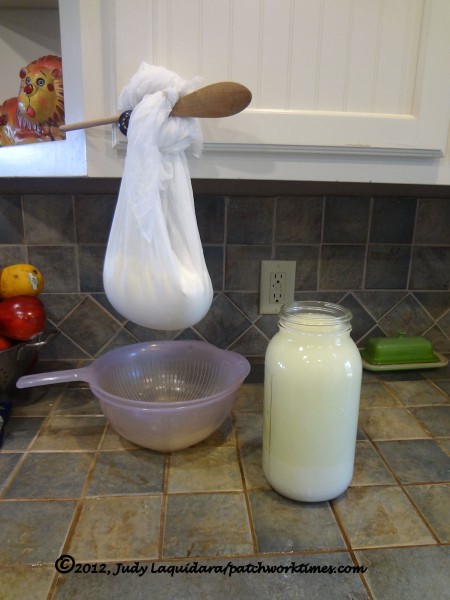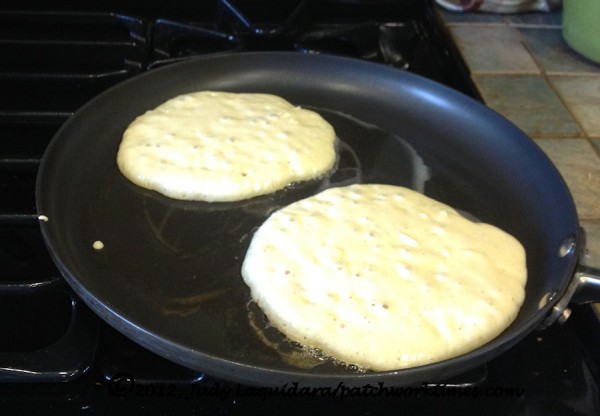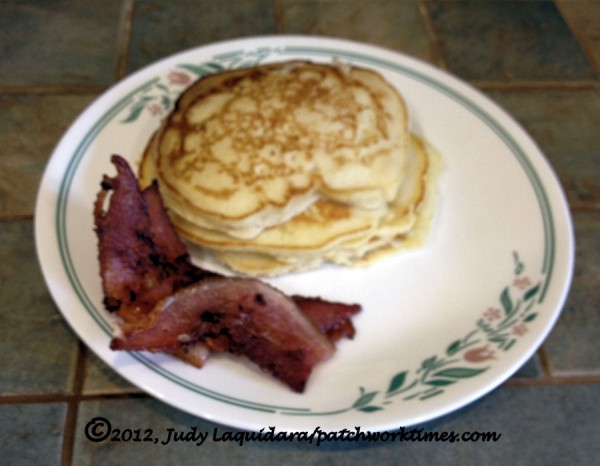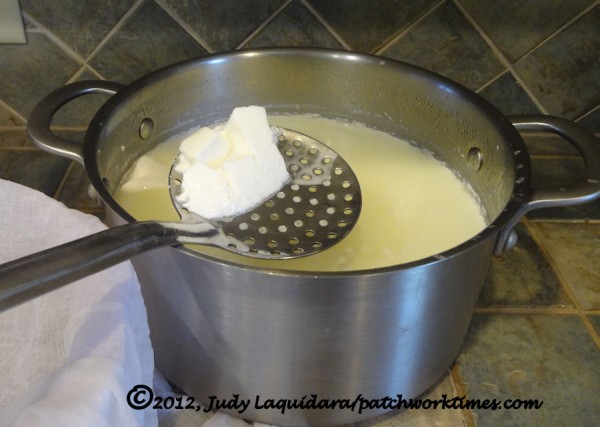After having acquired three gallons of goat milk Friday, the cheesemaking process began yesterday. I’m doing a little experiment. One gallon of milk was used for cheese which we will begin using as soon as it’s ready. The second gallon will be used to make cheese that I will freeze and then see how it turns out after being thawed and the third gallon of milk is frozen and I will thaw it later and make cheese from it and see how that turns out. Of course, I’ll let you know what that goes.
I will do a post about making the cheese, start to finish, once it’s done but here are a few things you might like to know if you’re feeling the desire to make chevre, or, goats milk cheese.
- From one gallon of goats milk, you should get about 1-1/2 pounds of cheese, along with at least 2 quarts of whey.
- The whey is great to use in bread, pancakes and other recipes that call for milk or water.
- Storebought goats milk will work, so long as it isn’t “ultra” pasteurized.
My favorite source for cheesemaking supplies is New England Cheesemaking Supply Company. For chevre, if you don’t already have the supplies, this kit is a great start.
This morning, after sitting undisturbed for about 20 hours, the curds had formed and could easily be separated from the whey.
Whey is touted to have large amounts of protein and amino acids and is way too good to dump down the drain. My white bread recipe calls for 2 cups of water so I freeze the whey in 2 cup containers and will use it in my bread in place of the water.
 This morning, I used 1 cup of the whey in place of milk to make Apple Cinnamon Pancakes!
This morning, I used 1 cup of the whey in place of milk to make Apple Cinnamon Pancakes! The picture may be a little blurry but the pancakes were delicious. If you didn’t know I’d used whey instead of milk, you couldn’t tell. It’s so nice to be able to use every drop of that milk for something yummy and nutritious.
The picture may be a little blurry but the pancakes were delicious. If you didn’t know I’d used whey instead of milk, you couldn’t tell. It’s so nice to be able to use every drop of that milk for something yummy and nutritious.


Amy @ Heritage Homemaker says
I have a friend that has dairy goats. I am going to start getting milk from her to make cheese, use in my soap and also to drink.
Robin says
I tried some goat cheese at a local farmers market and can’t say that I cared for it ( and I love cheese!). However I have some goat’s milk soap that is very nice. I may try a sample again next time I go.
JudyL says
I hate it when people say “It’s an acquired taste” but it really is and not all goat cheese tastes the same. I remember the first time we had it. A recipe called for it and I thought the whole dish was terrible. All I tasted was “goat” but Vince, who has had goat’s cheese often, loved it so I made that again, and then made other dishes using it and now I love it.
So, while I suppose it is an acquired taste, there’s really no reason to “acquire” it if you don’t have to do so but once you do, I think you’ll be hooked because it’s such a unique flavor.
julianne says
I have to give this a go for summer we love tomatoes and cheese salads..I have the herbs and tomatoes growing so now there is no excuse
Sally H says
Goats’ milk freezes just fine, but the longer it stays frozen the more it will separate upon thawing. Frozen for less than a month, you can’t tell a difference, but leave it frozen for 6 months and, when it thaws, there will be ribbons of curds floating in almost clear whey. When I use this long-frozen milk I blend it back together with my trusty stick blender. It is not as smooth as non- or short-frozen milk, but it works just fine for cooking and chevre making (and feeding baby goats.) I understand that adding a bit (teaspoon per 1/2 gal) of baking soda to the milk before freezing counteracts this separation tendency without otherwise effecting the milk, but I haven’t done enough experimenting to say for sure.
I find exactly zero difference in taste between frozen and fresh chevre, as long as you don’t try to thaw it in the microwave. (Chevre doesn’t like the microwave one bit! Thaw it in the ‘fridge or in a water bath.) Sometimes the frozen does have some whey separate upon thawing. I hang mine for about 24 hrs, so it is pretty dry/stiff, then freeze it in one pound lumps in plastic storage bags. I freeze it plain, without any additives.
Chevre can have different flavors based on 1) the age of the milk used (older milk – thus, what you can buy in the grocery store – tastes stronger.) 2) the culture used, 3) aging time. I tend to use my freshest milk for mozzarella, my day-old milk for chevre, and my oldest milk for feta (which is supposed to have a strong taste anyway.)
Judy, you seem to have a fair amount of solids left in your whey (based on opaqueness and the different color at the bottom of your glass jar.) You might consider pouring the whey through the cheesecloth instead of just scooping out the curds. (I line a colander with a well-washed linen or cotton tea towel, put it over a large pot, and pour the whole pot of curds and whey into the colander, letting the whey drain.) Yay for you, using every bit of this milk. I have a hard time using all the whey I produce, so there are pigs that help me out with that . (Pigs LOVE any part of goat milk.)